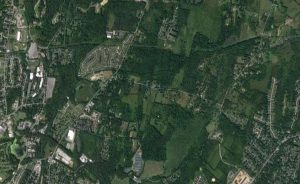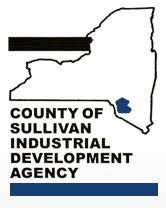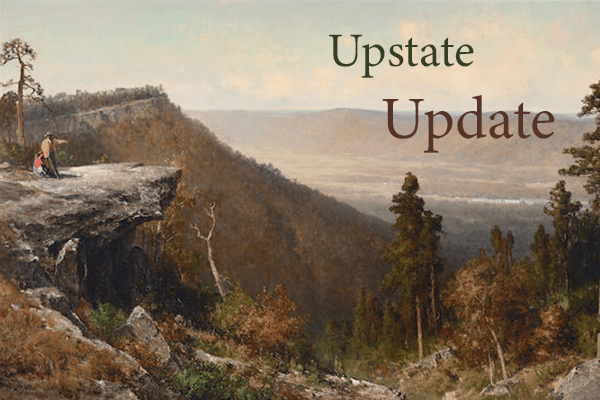|
RCBJ-Audible (Listen For Free)
|
New OSI Land Acquisition Strengthens Conservation Connection Between Shawangunk Ridge and Catskill Park
The Open Space Institute (OSI) has acquired land in the Town of Wawarsing, marking another critical step toward establishing a protected corridor between the Catskill Park and the Shawangunk Ridge. The property also provides shelter for wildlife and supports efforts to fight climate change.
OSI purchased the 237-acre property from Kristyn Monos, a conservation-minded landowner. Situated in Ulster County between the southern boundary of the Catskill Park and the northwestern boundary of the Shawangunk Ridge, the “Monos” property represents an essential link between the Shawangunk’s 30,000 acres of protected land and the Catskill Park’s 288,000 acres of protected land.
 The property, purchased by OSI for $500,000, is anticipated to be transferred to the New York State Department of Environmental Conservation as protected land for public recreational use.
The property, purchased by OSI for $500,000, is anticipated to be transferred to the New York State Department of Environmental Conservation as protected land for public recreational use.
The Monos property is close to more than 1,000 acres protected by OSI in late 2022. Together, the two properties form a solid foundation toward the creation of a Shawangunk-to-Catskills corridor.
“With the permanent protection of this property, a years-long effort to protect the landscape between the Catskill Park and the Shawangunk Ridge is finally taking shape,” said Matt Decker, a project manager at OSI. “In fast growing regions like Ulster County, it is becoming increasingly important for OSI to act with urgency and determination to save the land that matters for the health of our of our families, our communities, our wildlife, and our planet.”
New York State Department of Environmental Conservation Commissioner Basil Seggos said, “Not only will the addition of this corridor help increase public access to recreational opportunities within the Catskill Forest Preserve, but the protection of this land will provide critical habitat for plant and animal species and protect biodiversity, a key conservation priority in the face of a changing climate. We are grateful to our partners at the Open Space Institute for their outstanding commitment to environmental stewardship and land preservation for all.”
The Monos property contains wetlands and streams, including a section of the Fantine Kill winding through a hemlock forest. The Fantine Kill flows to the Rondout Creek and ultimately to the Hudson River. OSI’s protection of the property will help safeguard downstream water quality and slow the swell of floodwaters during heavy rain events.
OSI’s acquisition also protects a critical resource in the ongoing fight to mitigate the effects of climate change. Mature forests can sequester up to 35 percent of U.S. carbon dioxide emissions each year, providing a natural climate solution in the fight against climate change. The Monos property is heavily forested, allowing it to capture and store significant amounts of carbon. According to OSI’s data analysis, the property stores more than 21,750 metric tons of carbon, or nearly 92 metric tons per acre, in soils and trees.
New York State Purchase 95 Acres of Open Space In Poughkeepsie
New York State has purchased 95 acres of land in Poughkeepsie for $300,000. The two parcels of land in the Town of Poughkeepsie are mostly forested and include some small wetlands, streams, and a meadow.
The purchase is just part of over $1 million in land that has been acquired by New York State this month.
 The land is referred to as the “North 100” and is now under the control of New York State as part of a 200-acre land purchase by the Department of Environmental Conservation. The state has instituted a grant program to fund these purchases in order to protect forests and areas of “local importance.”
The land is referred to as the “North 100” and is now under the control of New York State as part of a 200-acre land purchase by the Department of Environmental Conservation. The state has instituted a grant program to fund these purchases in order to protect forests and areas of “local importance.”
According to the DEC, the land will be established as a community forest and will be protected from any future development projects.
According to New York State officials, the North 100 is home to a mature oak forest with an “undulating terrain with rocky outcrops and ridges”. The land, as well as the wetlands, streams, and meadows, are vital green spaces that are needed to conserve critical habitats and provide passive recreation.
The DEC says the land purchase program is to help conform to New York’s 30 by 30 law, which says the state must conserve 30 percent of its land and water by the year 2030. This law supports Joe Biden’s “America the Beautiful” Initiative that includes a national 30 by 30 goal.
Sullivan County Legislators Agree To Transfer Administration of Revolving Loan Funds To IDA
Sullivan County legislators have agreed to transfer the administration of revolving loan funds from the Sullivan County Planning and Community Development Division to the Sullivan County Industrial Development (IDA).
 These loans go back as far as 1997, offering reasonable interest rates to applicants shut out of traditional lending avenues, such as banks. The loans are provided by the U.S. Department of Agriculture (USDA) and U.S. Department of Housing and Urban Development (HUD) to support local businesses and spur economic growth.
These loans go back as far as 1997, offering reasonable interest rates to applicants shut out of traditional lending avenues, such as banks. The loans are provided by the U.S. Department of Agriculture (USDA) and U.S. Department of Housing and Urban Development (HUD) to support local businesses and spur economic growth.
Transferring administration to the IDA might help enable funding to reach more people, but it also moves oversight from the county to a corporation, which some detractors say is dangerous.
Heather Brown, the county’s planning commissioner, said there was overlap among businesses applying for loans and it made sense to consolidate.
Brown added that “it would be nice to have one stop where someone could talk to them, kind of counsel them on: “This is what we have available, this is how we can package it for you, this is how we can help your business survive. At the end of the day, I just want to make sure this funding isn’t sitting in a fund right now—which a lot of it is and isn’t getting out into the community. I want to see the funding in a location where there is the human infrastructure to advertise it. Right now it’s not doing anything. This seems like a good solution to our current issue.”














